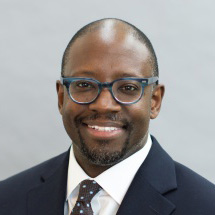 “Being less bad is not good.” This is a major theme of Cradle to Cradle, written by architect William McDonough and former Greenpeace chemist Dr. Michael Braungart back in 2002.
“Being less bad is not good.” This is a major theme of Cradle to Cradle, written by architect William McDonough and former Greenpeace chemist Dr. Michael Braungart back in 2002.
The book arrived like a tidal wave on the green movement and exposed the categorical deficiencies and uselessness of tags like, “reduce, reuse, recycle.” The problem highlighted in the 2002 book is not that we need to simply damage the environment less but, even worse, we lack the entrepreneurial creativity and innovation to design products that actually make the natural world better after their initial use. Eleven years later, McDonough and Braungart move the conversation forward and provide a framework to think differently in their new book, The Upcycle: Beyond Sustainability—Designing For Abundance.
There isn’t space here to review the entire book but the introduction and first chapter alone are enough to challenge the ongoing hegemonic perspective that sees human action as an environmental liability rather than seeing human action, as McDonough and Braungart suggests, as an asset to the flourishing of all life. First, the authors challenge readers to see the world as space teaming with abundance instead of finite resources. Just as plant and animal waste are actually complimentary nutrients in an ecosystem we should begin to think creatively about how the by-products of our manufacturing processes can become “technical nutrients” to other processes. Human action creates opportunities for positive cultivation.
Second, the authors explain that government regulations signal that a product is not designed well. Government regulations will not be needed if the by-products of our manufacturing processes and consumer product usage actually makes a positive contribution to natural ecosystems. Government regulations do not foster innovation and only encourage us to be “less bad.” Minimizing negative impact, “is insufficient as a strategy because it encourages us to stick with what is poorly designed–just to try to do less of it,” the authors note. With more innovation, “government regulations drop away when there are no ill effects to minimize.” We can do better than being “less bad.”
Third, human activity adds to the flourishing of the natural world. Humans are not mere consumers of nature but we contribute to its flourishing through our creative stewardship. We need to stop believing the prevailing green movement rhetoric that humans need to leave a smaller footprint in nature. Since humans are creative and innovative we need to think about leaving a much larger and intentional footprint for generations to come. For example, the authors note, saving water and energy has less and less to do with being positively environmental in terms of human action adding to the flourishing of the natural world. Conserving doesn’t make things better.
Finally, we need to avoid the trappings of the what McDonough and Braungart call “ecologism.” The authors define this as “the strident metrics and mandates intended to “help” the environment that do not actually support ecologies or commerce.” We see ecologism, for example, in America’s recycling industry and programs. They are neither beneficial to nature, because they are manufacturing processes themselves and can be harmful to the environment, nor do they move the economy forward. McDonough and Braungart observe,
Even though environmental efforts are often well-meaning, ecologism can be tyrannical: Its laws may only mandate that we save energy and water, minimizing the negative effects of poor design—in other words, ‘green-washing’ the dirty laundry a bit.” Under this dictatorship of ecologism, we see more codes and standardization, more regulation that stunts economic growth and incentive, more limiting of consumer choices. . .[in extremes] only saving resources would matter and quality of life would be secondary.
The prevailing green movement has totally bought into ecologism and so have many religious leaders because they view human persons primarily as the cause of environmental degradation rather than human persons as reservoirs of environmental sustainability. Some readers will be surprised to find that former President Bill Clinton writes the forward for the book because he gets it: being less bad is not good and ever-expanding government regulations will not get us there. What is needed are the economic and political conditions that encourage entrepreneurs and designers to redesign how we make things.
In the end, McDonough and Braunhart hope to move us beyond thinking of humans as sources of negative footprints and promote the human population explosion “as a success story.” That is, with more people in the world we have an even greater opportunity “to put forth a design model based on thriving people sharing the present with the future.” Human flourishing is for the flourishing of all life.

